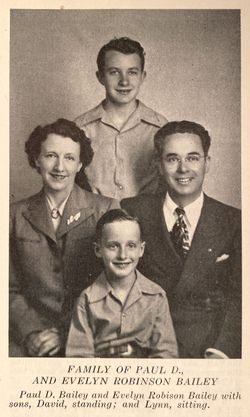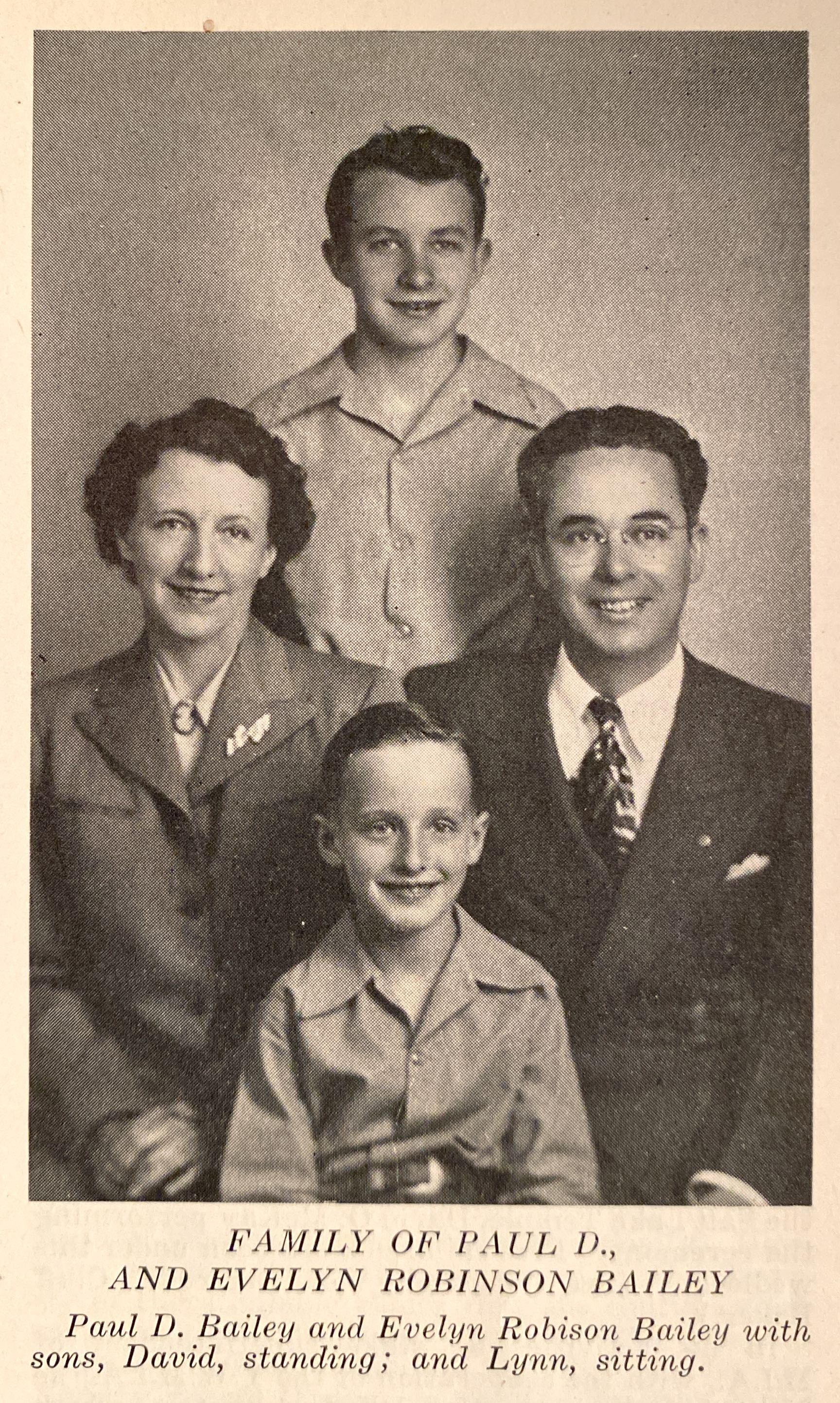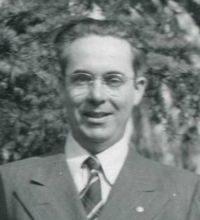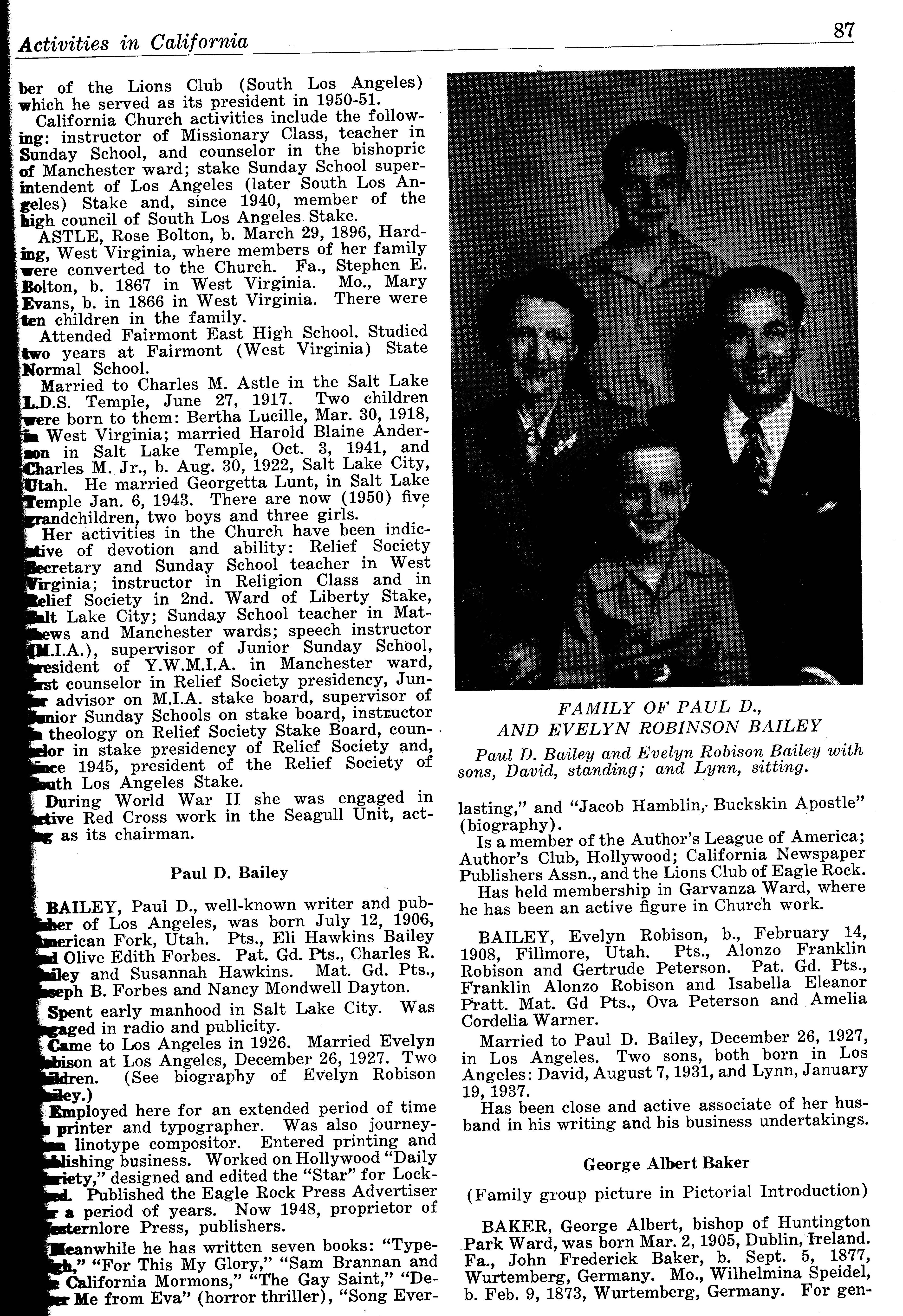Paul left home at the age of 13, and traveled the rails until 1922, when he returned to Salt Lake City and enrolled at the University of Utah. To pay for school, he worked as a stable keeper, a hospital orderly, and a reporter for the Salt Lake Telegram. When the Telegram folded in 1926, Bailey left for Los Angeles to find work as a radio operator. There his search for work was also unsuccessful, and he ended up on "Skid Row." Through a happy accident, he got a job in a print shop and in a few years became a journeyman printer. He married his wife Evelyn, formerly of Fillmore, Utah, in 1927.
Still pursuing a career in Journalism, Bailey also worked as a reporter for the Los Angeles Record and the Hollywood Citizen. His first novel, Type High, a semi-autobiographical work about his experiences as a printer, was published in 1937, followed by For This My Glory in 1940. During the first part of World War II, Bailey worked for the Lockheed Corporation, editing their plant newspaper, the Lockheed Star. In 1943, Paul and Evelyn bought the Eagle Rock Advertiser, a small local newspaper in the Los Angeles area. Both Baileys threw themselves into the newspaper business, and the Advertiser soon flourished. That same year, realizing that he had no time to run a newspaper and search for publishers for his books, Bailey founded the Westernlore Press.
While he was actively running Westernlore Press, Bailey published many of his own books, as well as books by other western authors such as Robert Utley, Arthur Woodward, Max Evans, Harry James, and Pearl Baker. Bailey's books included Sam Brannan and the California Mormons, 1943; The Gay Saint, 1944; Jacob Hamblin, Buckskin Apostle, 1948; Walkara, Hawk of the Mountains, 1954; and Grandpa was a Polygamist, 1960. His books on Mormon church history were at first well received by church leaders, and for years were serialized in church publications and used for church classes. His first book by a major publisher, however, For Time and All Eternity, (Doubleday 1964), dealt with an issue (polygamy) that the church was very sensitive about, and Paul's relationship with the Mormon church went downhill from there.
In all, Bailey wrote and published over forty books on western history, as well as innumerable articles, book reviews, and tributes. He was in great demand as a speaker, and often gave talks to local and national organizations. He was a founding member of Westerners International, a member of the Los Angeles Corral of Westerners, Death Valley 49ers, E Clampus Vitus, and Western Writers of America, where he served as President in 1979-1980.
After a fire wiped out Westernlore's inventory in 1973, Lynn Bailey (his son) took control of the business from his aging father and moved the press to Tucson, Arizona. (Biographical notes from: The Paul Dayton Bailey Photograph Collection, ca 1940-1980 A Register of the Collection at the
Utah State Historical Society)
Paul left home at the age of 13, and traveled the rails until 1922, when he returned to Salt Lake City and enrolled at the University of Utah. To pay for school, he worked as a stable keeper, a hospital orderly, and a reporter for the Salt Lake Telegram. When the Telegram folded in 1926, Bailey left for Los Angeles to find work as a radio operator. There his search for work was also unsuccessful, and he ended up on "Skid Row." Through a happy accident, he got a job in a print shop and in a few years became a journeyman printer. He married his wife Evelyn, formerly of Fillmore, Utah, in 1927.
Still pursuing a career in Journalism, Bailey also worked as a reporter for the Los Angeles Record and the Hollywood Citizen. His first novel, Type High, a semi-autobiographical work about his experiences as a printer, was published in 1937, followed by For This My Glory in 1940. During the first part of World War II, Bailey worked for the Lockheed Corporation, editing their plant newspaper, the Lockheed Star. In 1943, Paul and Evelyn bought the Eagle Rock Advertiser, a small local newspaper in the Los Angeles area. Both Baileys threw themselves into the newspaper business, and the Advertiser soon flourished. That same year, realizing that he had no time to run a newspaper and search for publishers for his books, Bailey founded the Westernlore Press.
While he was actively running Westernlore Press, Bailey published many of his own books, as well as books by other western authors such as Robert Utley, Arthur Woodward, Max Evans, Harry James, and Pearl Baker. Bailey's books included Sam Brannan and the California Mormons, 1943; The Gay Saint, 1944; Jacob Hamblin, Buckskin Apostle, 1948; Walkara, Hawk of the Mountains, 1954; and Grandpa was a Polygamist, 1960. His books on Mormon church history were at first well received by church leaders, and for years were serialized in church publications and used for church classes. His first book by a major publisher, however, For Time and All Eternity, (Doubleday 1964), dealt with an issue (polygamy) that the church was very sensitive about, and Paul's relationship with the Mormon church went downhill from there.
In all, Bailey wrote and published over forty books on western history, as well as innumerable articles, book reviews, and tributes. He was in great demand as a speaker, and often gave talks to local and national organizations. He was a founding member of Westerners International, a member of the Los Angeles Corral of Westerners, Death Valley 49ers, E Clampus Vitus, and Western Writers of America, where he served as President in 1979-1980.
After a fire wiped out Westernlore's inventory in 1973, Lynn Bailey (his son) took control of the business from his aging father and moved the press to Tucson, Arizona. (Biographical notes from: The Paul Dayton Bailey Photograph Collection, ca 1940-1980 A Register of the Collection at the
Utah State Historical Society)
Family Members
Sponsored by Ancestry
Advertisement
Explore more
Sponsored by Ancestry
Advertisement
















